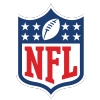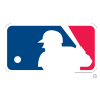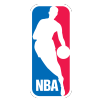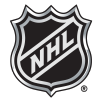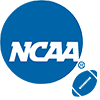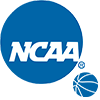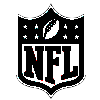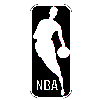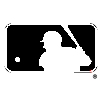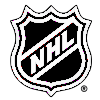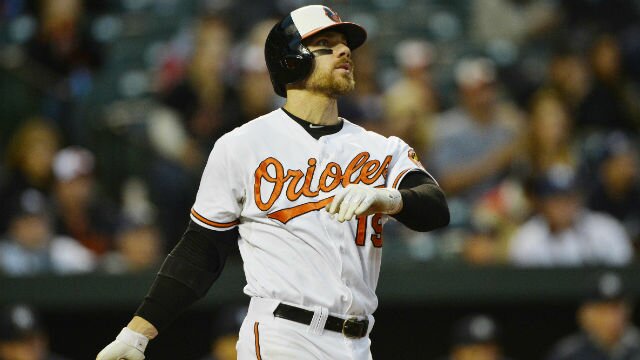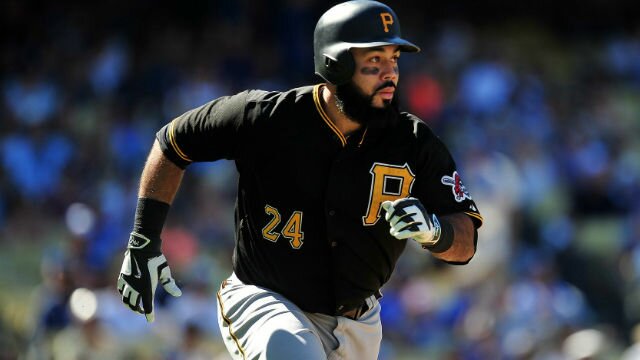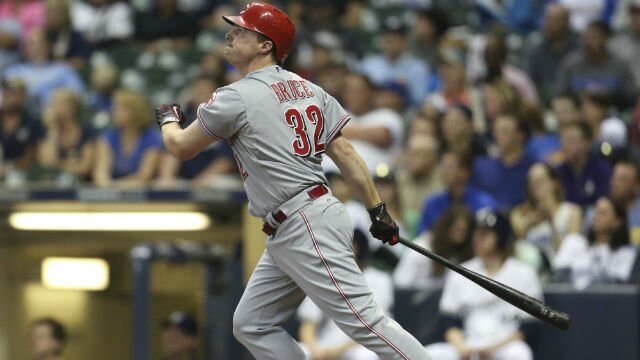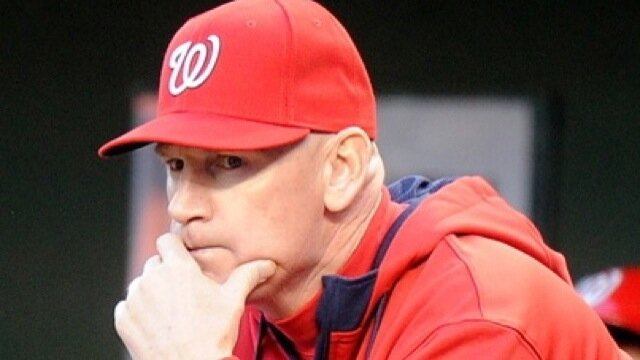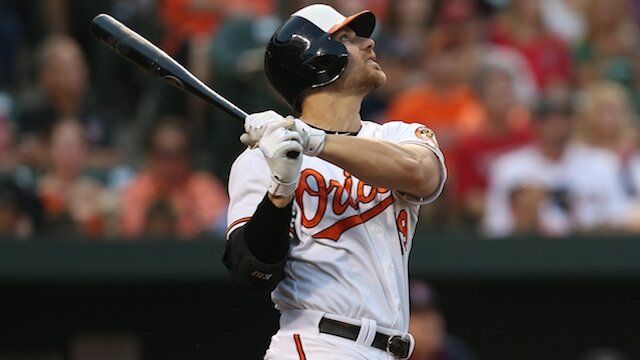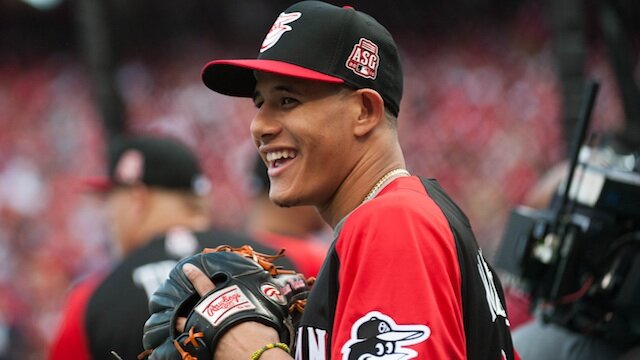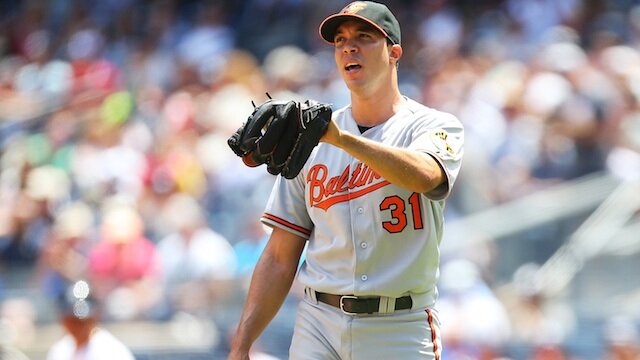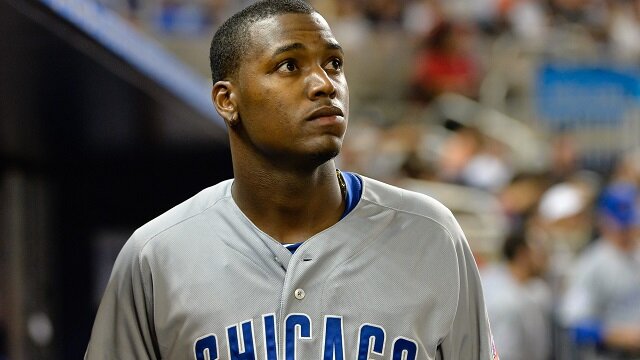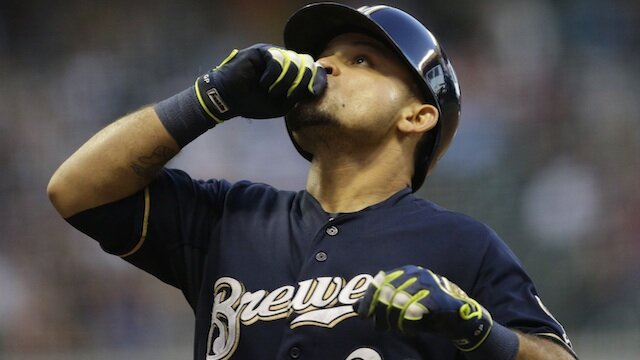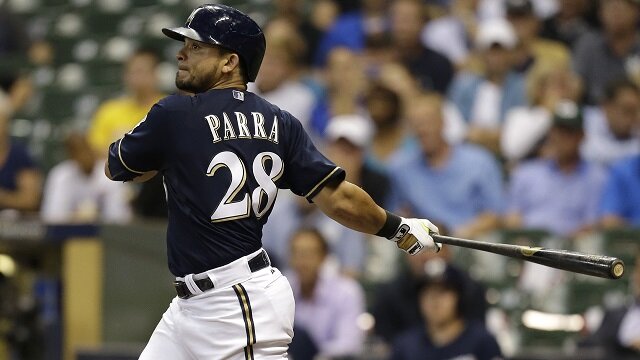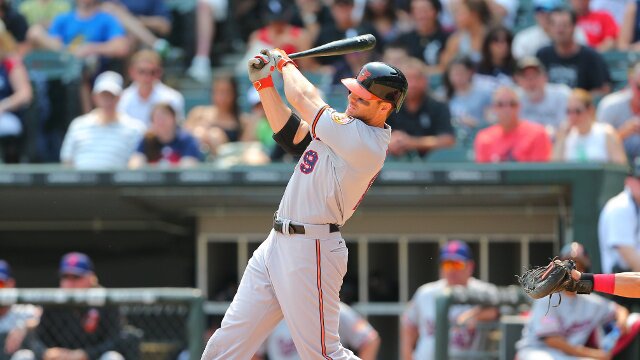
Heading into 2015, one of the biggest questions surrounding the Baltimore Orioles was the issue of what to expect from slugger Chris Davis. Acquired by the O’s back in the summer of 2011, the former fifth-round draft pick of the Texas Rangers finally broke through with a big 2012 season and then followed it up with a 53-homer campaign the following year.
Last year, however, he scuffled to the tune of a .196/.300/.404 slash line in an 0.8 fWAR campaign that was prematurely ended by a 25-game amphetamine suspension. He reportedly had a therapeutic-use exemption in the past, but didn’t last year. He now has another TUE for a different medication, according to FOXSports.com.
Considering the fact that Baltimore lost two big pieces of last year’s AL East-winning club to free agency in Nick Markakis and Nelson Cruz, many felt that Davis bouncing back would be absolutely crucial to the O’s hopes of contending this season. Although the O’s are now sitting 12 games back in their division and six games out of the second AL Wild Card spot, Davis has still done his job.
Through 141 games this year, the 29-year-old Davis has slashed .263/.357/.559 with 42 home runs and a 147 wRC+ in a 4.6 fWAR campaign thus far. He has been particularly impressive post-All-Star break, hitting .307/.415/.698 with a 199 wRC+. He has also hit 23 of his homers in the second half.
Sure, he has struck out 189 times in 588 plate appearances for a 32.1 percent K rate and will almost certainly rack up over 200 Ks by season’s end, but that is hardly unexpected. Although he will swing and miss, he will also draw quite a few walks. He has posted a robust 11.9 percent walk rate so far this season.
Davis’ 42 homers are also good enough for the top mark in MLB at the moment, placing one spot ahead of his former teammate Cruz. Right now, one could make the case that he is the best pure home run hitter in the game, save for perhaps the currently injured Giancarlo Stanton. Moreover, since the beginning of the 2012 campaign, Davis has hit 154 long balls, which also leads the majors. Even during his rough 2014 season, he still managed to hit 26 dingers.
Given the fact that Davis plays his home games in Baltimore, one might be tempted to attribute at least some of his success to the hitter-friendly confines of Camden Yards. However, 40.4 percent of his homers have come on the road this year. According to ESPN’s Home Run Tracker, his long balls are also traveling an average true distance of 403.5 feet. Plus, only nine of his big flies have fallen into the “just enough” or “lucky” departments, with the other 33 fitting into the “no doubt” or “plenty” categories.
Going into the offseason, Davis can be expected to be a rather hot commodity. Of course, there may still be a certain amount of risk involved considering his early-career struggles with the Rangers and the rough campaign he had last season, but in all likelihood, that won’t be enough to scare his suitors away.
But, how can teams be sure that he isn’t going to pull another 2014 again? Well, it may be worth taking a look at one of the major adjustments the slugger has made this season, which could help make him more immune to encountering similar issues.
Since he became one of the league’s premier power hitters back in 2012, a good deal of Davis’ damage has been done on balls that are on the middle or outer part of the plate. It makes sense that Davis, with his 6-foot-3, 230-pound frame and rather long swing, would like pitches in this area.
During his superhuman 2013 campaign, it would suffice to say that Davis used left field to his advantage. As a matter of fact, he led the league in opposite field home runs (14) and wRC+ to the opposite field (325).
This year, he has hit six home runs to the opposite field, which is still good enough to tie with several others for fourth place in the AL. However, there is a noticeable shift in the area in which the majority of his home runs have been going, as more of them have been going to the pull field.
Davis’ pull rate this season now sits at a career-high 55.3 percent (it was 46.2 percent back in 2013). Likewise, the percentage of balls he has hit to the opposite field sits at a career-low 17.7 percent. It appears that Davis has made an adjustment on the inside pitch, particularly balls that are up and in. Back in 2013, his isolated power was .044 on pitches that were high and on the inner part of the plate.
From the beginning of 2014 through the unofficial midway point of this season, over four percent of the four-seam fastballs that Davis saw were in this exact area. This was likely an attempt to get him to swing and miss or get him to hit the ball on the handle.
But over this period of time, Davis began having success against this pitch. His isolated power against the up-and-in fastball rose to .375.
From the All-Star break on, Davis has seen only 1.31 percent four-seamers in this area. Now that he has shown that he can turn on the high and inside pitch, opposing pitchers have been forced into going away from him more often, which should give him a chance to display some of his impressive opposite field power again.
Despite the fact that Davis continues to strike out at an astonishingly-high rate, it is also clear that he is having a much easier time not only hitting for power on pitches that are up and in, but simply getting to them and making contact. From 2013-14, he had a 36.08 whiff per swing rate on all pitches in this area.
This year, he has cut it down to only 25 percent.
The adjustment that Davis has made this year shows that he can be dangerous on both inside and outside pitches going forward. His .325 BABIP and high strikeout rate may bring about questions as to whether or not even a 260-ish batting average will be sustainable, but again, the most important element of his game is the power.
So, what might his next contract look like? Well, back in early August, Tim Dierkes of MLBTradeRumors.com suggested that Davis is once again resembling a player who could garner a nine-figure deal. A more recent article suggested that Davis and fellow slugger Yoenis Cespedes could be aiming for seven-year contracts with annual paydays in the $20-million plus range.
Although it may be hard to predict exactly what Davis will be able to garner on the free agent market, it may be time to begin looking at a few comparisons.
In 2010, when then-30-year-old Ryan Howard was still in his prime, he signed a five-year, $125 million extension with the Philadelphia Phillies, which kicked-in in 2012. It wouldn’t be too surprising to see Davis land a similar deal on the free agent market. Furthermore, even after 2014, Davis has still been worth an average of 3.8 fWAR over the past four seasons, and there are still three weeks left to play this year. Assuming that a win above replacement is worth about $7 million on the free agent market, he could certainly be a $20-plus million per year player.
It may also be worthwhile to note that Davis is a Scott Boras client, so teams looking to add this winter’s premier left-handed power bat could very well find themselves in a bidding war before all is said and done. It may be similar to the 2008-09 offseason when switch-hitting Mark Teixeira (a then-Boras client) was being linked to teams such as the Boston Red Sox, Washington Nationals and Orioles before finally signing with the New York Yankees.
Granted, Davis’ contract almost certainly won’t get up to the eight-year, $180-million pact that Teixeira was able to get, but the price could still get higher than some expect. A team such as the Miami Marlins may be prepared to dangle an enticing deal his way, as he would provide an ideal left-handed complement to Stanton. The San Diego Padres could also use a slugging first baseman, and A.J. Preller certainly likes his star power.
But, can the Orioles retain their man? Well, it is still very possible, but it goes without saying that they will need to be prepared to spend. When center fielder Adam Jones agreed to a six-year, $85.5 million extension back in 2012, it was the largest contract in O’s history. It would be very tough to imagine Boras and Davis not asking for something in the neighborhood of Jones’ deal at the very least. Clearly, the O’s are extremely likely to extend him a qualifying offer, so they will at least pick up a draft pick if he opts to sign somewhere else, but it doesn’t look like keeping him is a slam-dunk right now.
At this point in time, only one thing is for certain: Davis is going to get paid. Whether it is Baltimore or another team that dishes out the cash, he almost certainly has a few more big-homer seasons in him as well.
* All statistical information courtesy of Baseball-Reference, Brooks Baseball, Fangraphs and ESPN.com.
Brad Faber is a Senior Writer and Sabermetrics Columnist for www.RantSports.com. Follow him on Twitter @Brad_Faber, “Like” him on Facebook or add him to your network on LinkedIn or Google.


